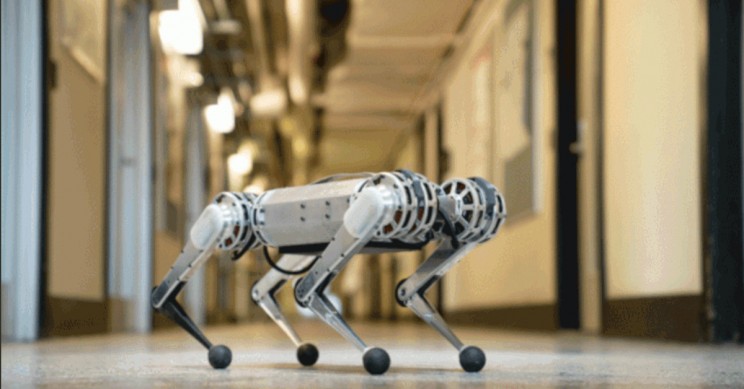Mini Cheetah, MIT’s latest Droid is far more sophisticated than the robots you have seen so far. We have seen them open and hold doors, and we have witnessed them avoiding obstacles. However, Mini Cheetah has beaten them all with its capability to perform a backflip!
The four-legged robot by MIT’s Department of Mechanical Engineering is a feat of engineering. The team never fails to impress us and this time it has done so with the Mini Cheetah. The robot weighs in at only twenty pounds, and this might be the critical element for its amazing capabilities. The quadruped can run faster than an average human walks and is capable of swinging and bending similar to a yogi and makes use of its rotating limbs for maintaining a perfect balance.
Mini Cheetah makes use of three identical motors, electric, on each of its legs. The robot was built using off-the-shelf parts in the building thus keeping the cost of building it low. Each element of the robot can be replaced without any difficulty in case of an accident or malfunction. The lead developer Benjamin Katz said, ‘You could put these parts together, almost like Legos.’ With the three motors per leg design, he is able to enjoy a wide range of motion.
Mini Cheetah is dynamic and fast while making maneuvers because of its low weight and high torque. It is capable of handling any kind of rough terrain without breaking its gearbox or a limb. The technical associate Mr. Katz while describing Mini Cheetah’s skillset said, ‘When it’s running, its feet are only on the ground for something like 150 milliseconds at a time, (…) it can do really dynamic stuff like jump in the air with every step, or run with two feet on the ground at once.’
Mr. Katz and his co-author Jared Di Carlo (an undergraduate at MIT) took a class together that was taught by EECS Professor Russ Tedrake. It inspired them to attempt to program a backflip. They then proceeded to adjust the torques on each individual motor and according to Katz, ‘The first time we tried it, it miraculously worked!’ The duo, which built the Mini Cheetah in the lab of associate professor Snagbae Kim, will be presenting its work at the International Conference on Robotics and Automation in May.
Professor Kim says, ‘Eventually, I’m hoping we could have a robotic dog race through an obstacle course, where each team controls a mini cheetah with different algorithms, and we can see which strategy is more effective.’

